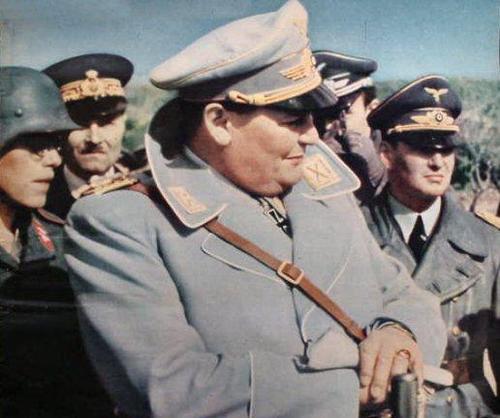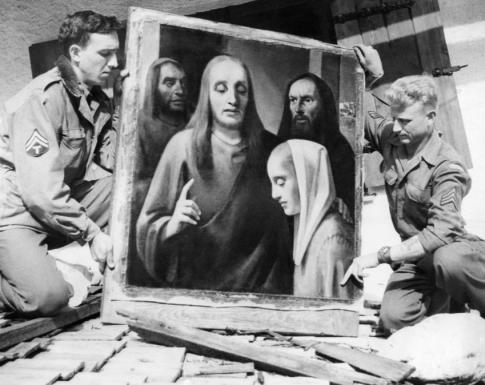Law & Politics
Handwritten Catalogue of Nazi Leader Hermann Göring’s Art Collection Debuts Today
The inventory even indicates what rooms housed particular paintings.

Image: www.ww2incolor.com.
The inventory even indicates what rooms housed particular paintings.

Brian Boucher


American troops unpack art stolen by the Nazis, including forgeries such as this faux Vermeer.
Photo via Institute of Museum Ethics.
Masterpieces by Sandro Botticelli, Claude Monet, and Vincent van Gogh figure among artworks that passed through the hands of one of the most notorious criminals of the 20th century.
Hitler’s second in command, Hermann Göring, kept a handwritten catalogue of some 1,400 works of art the Nazis stole from Jewish owners, which were allegedly kept in Göring’s country home near Berlin. Flammarion will publish the entire catalogue for the first time today, London’s Telegraph reports. The publication reportedly details which families the works were stolen from, which may aid in restitution efforts.
“This is the first time that we have the complete catalogue,” World War II historian Jean-Marc Dreyfus tells the Telegraph. “My colleagues in other countries tried to reconstitute the list of works in this extraordinary collection, but there was uncertainty over 300 to 400 works because we didn’t have this catalogue.”
Göring founded the German secret police, and held various positions in Hitler’s administration after his tenure as president of the Reichstag. His entire art collection comprised some 4,263 works, according to Berlin’s German Historical Museum, which published the full inventory of Göring’s collection, in 2012.
Previously available only to scholars, the handwritten Göring inventory will appear in full in the book The Goering Catalogue. It also reportedly includes works by Pierre-Auguste Renoir and Diego Velázquez, and indicates details revealing the placement of two Renoirs in the dining room.
Göring is often misquoted as saying, “Whenever I hear the word culture I reach for my revolver.” (It’s actually a paraphrase of a line from Hanns Johst’s 1933 play ”Schlageter,” which premiered on Hitler’s birthday.)
But near the end of the war, the former Nazi leader attempted to whisk his extensive art collection to the Austrian border for safekeeping. He surrendered in 1945, and committed suicide before he was to be hanged following the Nürnberg trials in 1946.